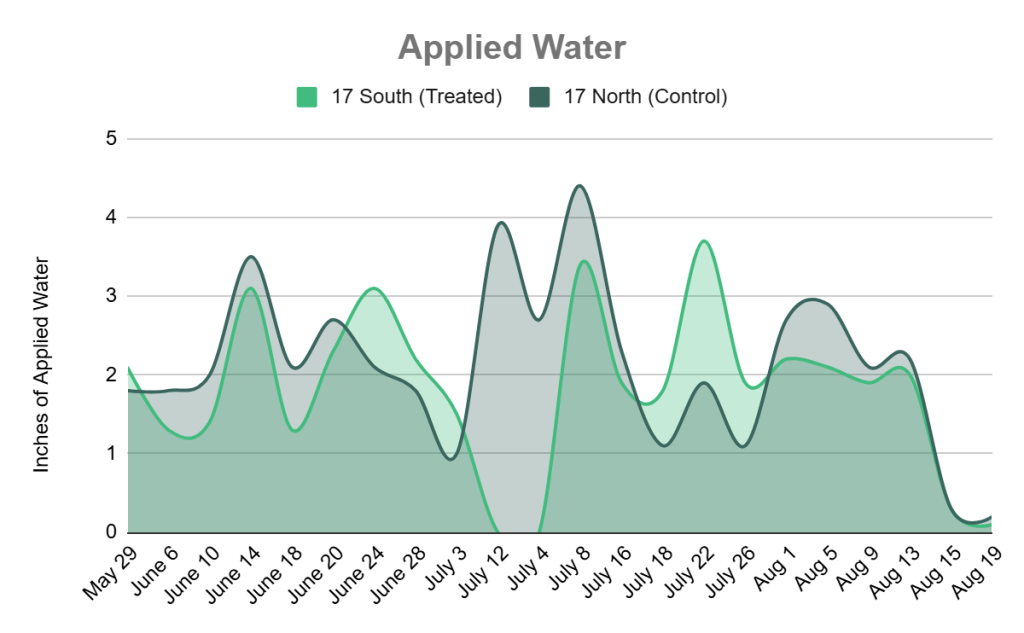Location: Blackfoot, ID
Trial Goal
- Increase yield
Key Results
The following results were observed in the TerraFlow®-treated field, relative to the control:
- 47.3 cwt per acre yield increase (+11.7%)
- 32.5% increase in crop value driven by higher yields and improved size distribution
- Higher quality with 18% fewer culls
- 17.7% less water applied
Trial Setup
- A split-field design was used to compare the agronomic performance of UpTerra-treated potatoes with that of untreated potatoes.
- TerraFlow® devices were installed directly in the irrigation system to enhance water use across the treated side of the field. The units use a patented process that organizes and enhances irrigation water via simultaneous vortexing and frequency transmission, aimed at improving soil infiltration and plant hydration.
- TerraNet® frequency transmitters were deployed to deliver targeted signals designed to support soil and plant health. These frequencies, transmitted via the irrigation system, were intended to stimulate biological processes, such as nutrient uptake, microbial activity and plant resilience throughout the growing season.
- The amount of water applied to both the treated plot and the control plot was tracked throughout the 2024 growing season. The treated plot received 17.7% less water than the control, which may have put it at a disadvantage from a crop health perspective.
- During the 2024 growing season, 49 nutrient and pesticide applications were tracked across the treatment and control fields. Both fields received the same applications, but 9 of those applications were applied at different rates. The treated field received lower rates only once when Compose G, a humic acid, fulvic acid and carbon amendment, was added at 3.47 lbs per acre less. The remaining applications were at higher rates for the treated field. These fertility differences may have given the treated field a slight crop health advantage over the control field.
- Each side of the field was harvested separately, and scale tickets were used to compare yields.
- Statistical analyses were conducted on all applicable data, including a paired T-test and Least Significant Difference analysis.

| Total Applied Water (inches) | Percent Difference | |
| UpTerra-treated | 39.6 | -17.7% |
| Control | 46.6 |
| Inputs with Different Rates | Control Rate | UpTerra Rate | Percent Difference |
| Compose G (lbs/acre) | 99.63 | 96.16 | -3.5% |
| Copper sulfate (lbs/acre) | 7.91 | 7.92 | 0.1% |
| Potash 0-0-50 (tons/acre) | 0.21 | .26 | 23.8% |
| MAP 11-52-0 (tons/acre) | 0.11 | .13 | 18.2% |
| Granubor II (lbs/acre) | 19.85 | 19.94 | 0.5% |
| Manganese Sulfate (lbs/acre) | 28.21 | 28.3 | 0.3% |
| Tiger 85CR Sulphur (tons/acre) | .20 | .21 | 5.0% |
| Trio SOP (lbs/acre) | 95 | 95.41 | 0.4% |
| Zinc Sulfate (lbs/acre) | 16.34 | 18.11 | 10.8% |
Trial Results Summary
Potato Yield
Despite a nearly 18% reduction in applied water, the treated field demonstrated a notable yield advantage with an 11.7% increase in production.
| Cwt per acre | Percent Change | |
| Control | 403.7 | 11.7% |
| UpTerra | 451 |
Cwt Per Acre Increase+47.3 |
Potato Quality
While the treatment resulted in a minor 1% decline in top-grade potatoes and a 20% increase in greens (which may require management adjustments), the overall economic and agronomic benefits suggest that UpTerra contributes positively to both yield and profitability.
- Process Culls: The treated potatoes had 18% fewer culls, indicating less waste and improved overall quality for processing.
- Greens: The treated potatoes showed a 20% increase in greens, potentially due to factors like light exposure during growth or storage, which may require management adjustments.
- Total #1’s (Top-Grade Potatoes): A 1% decrease in the proportion of #1-grade potatoes, possibly offset by improvements in size or yield.
- Total Over 6 oz: The treated crop produced 2% more large potatoes, a desirable trait for many markets.
- Specific Gravity: Both the treated and control groups showed nearly identical specific gravities, indicating similar suitability for processing uses such as frying or baking.
- Paid CWT (Revenue): The treated potatoes generated 32.5% more revenue, driven by higher yields and improved size distribution.
| Control | UpTerra | Percent Difference | |
| Process Culls | 4.95% | 4.08% | -18% |
| Green | 0.95% | 1.14% | 20% |
| Total #1’s | 81.69% | 80.92% | -1% |
| Total Over 6 oz | 76.66% | 78.07% | 2% |
| Specific Gravity | 1.087 | 1.0871 | 0.01% |
| Paid CWT (Revenue) | 54107.7 | 71710.9 | 32.5% |
Key Trial Takeaways
- The trial results indicate that the UpTerra treatment has a positive impact on potato production, increasing yield, revenue and tuber size.
- This trial also suggests that UpTerra technologies can help potato growers extract more value from their crops while reducing the amount of applied water.
Related Content
Why Your Crops May Be Struggling: It Might Not Be What You Think
The True Cost of Farm Irrigation — and How New Technologies Can Help



